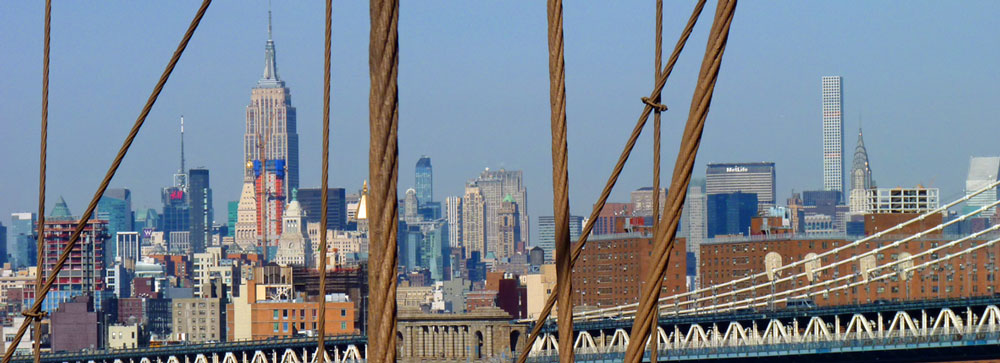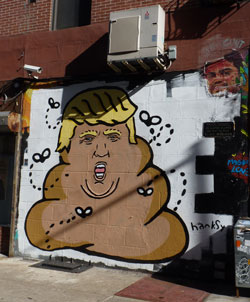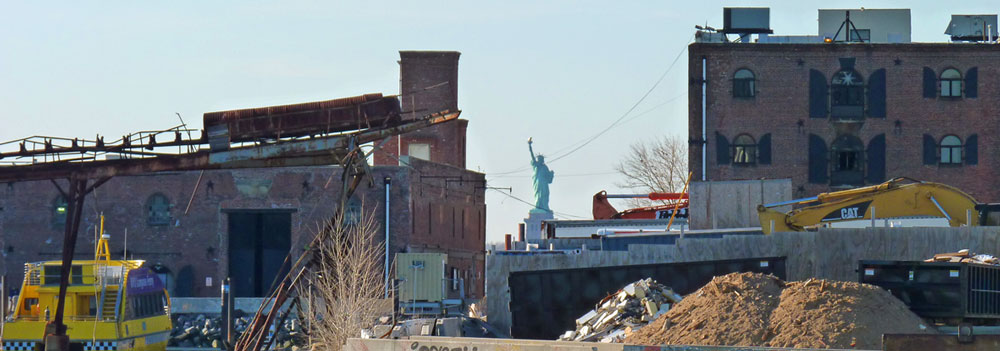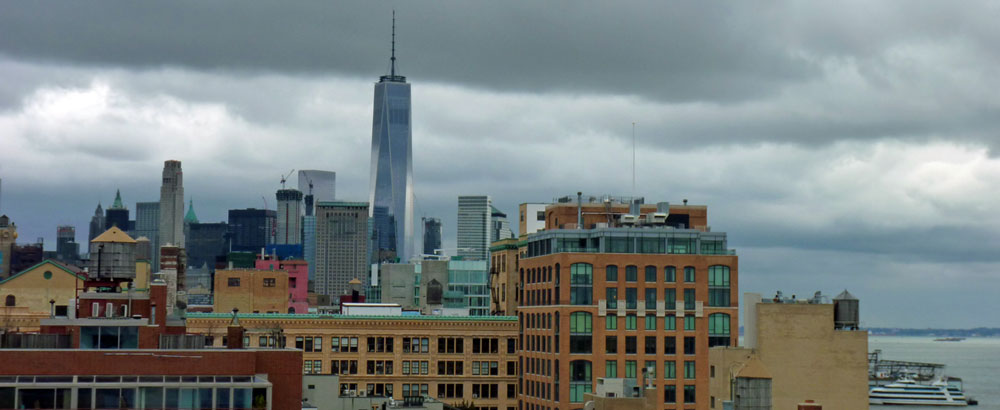 |
||
 |
||
12 March 2016
The evening we arrived in New York we walked down the road and round the corner to get in some supplies at the supermarket. We were staying in the East village – very hip nowadays, and full of life and character but definitely not Park Ave.
‘I didn’t expect it to be quite so like Naples,’ said L and he was right. Used as we are to our spic and span countryside – and even to our well groomed European cities – New York is surprisingly grimy. Then again, a comparison to Naples from two Naples-lovers can only be read as a compliment. And on this our (oddly) first visit, we found much to like about New York too.
I’ll deal with the Nature first: it’s not what you go to NYC for, I know, but it’s what my eye picks out and what talks to me about the place and its people. End February-early March is not the time to see greenery at its best. In fact, it’s the time that icy gales lurk round every corner, waiting to bite into your marrow. However…
Central Park. That quite such an immense green space should be carved out of this small island and never eaten into, even as property prices went stratospheric, was/is visionary and hugely laudable. I rather like its formality, its faux-hills, its very citified version of landscape (this may be less noticeable, I admit, when the trees are less stark and there’s a little in the way of bloom). I like, too, the way it’s so used – by the intent runners who are so much a feature of the city, by serious cyclists (L did a few rounds with an editor of his) and by parents perambulating with children of all sizes, despite the chill.
One evening towards dusk when L was elsewhere, I walked all the way from Grand Central station to the Metropolitan museum, passing through the park as the late dog-walkers scuttled about in the cold. Very briefly I tried to imagine myself back in the bad years of NYC, the years of violence and high crime but despite the gathering gloom it was very difficult to reconcile the scene in front of me with the idea of danger. In fact nowhere in Manhattan (or beyond) did we feel threatened in any way. Were we being completely naïve?
Our attempt to walk the High Line lasted no more than five minutes, so piercing was the wind up there, but I kind of got the picture. The hardscaping is elegant, the art interesting(ish). The planting suffers from what I call The Curse of the Oudolf … oh, of course because as I had completely forgotten (but have just remembered) it was Piet himself who was responsible for it. Great lashings of herbaceous perennials are all very well in spring and summer and a bit of autumn but if you happen by in the depths of winter you kind of feel hard done by, longing for some concession to year-round pleasure. I find myself wandering why they couldn’t have given me just a tiny bit of gratification for having climbed up there and frozen half to death to admire the thing.
As a garden designer myself, I am irked when a predetermined model overrides the pleasure of those for whose use a garden is destined: it reeks of arrogance to me. (Looking at the Oudolf site, I see he also did the Battery Park gardens – an idea which I am trying to get my head round right now: I thought the signs down there were saying that that park was going to be redeveloped, not that it had been: the planting in February looked like some long-abandoned urban wasteland where you kept a tight hold on your bag and dodged the wind-borne plastic bags. Please! When will we wake from this collective herbaceous fallacy?)
The Hudson River park has an element of the same, redeemed by more variety. This is another extraordinary bit of urban far-sightedness, following the Hudson shore right from the Battery up to the northernmost tip of Manhattan island. We bundled up warm and rented bikes round about West 12th St and started up through shoals of dogged runners (they are, as I said, ubiquitous), past frozen lawns and pier-side attractions to the left and high-rises to the right, on and on though neighbourhood sports pitches, beneath immense flyovers of the type usually rubbish-strewn and echoing to the squeal of tyres in cop-movie car chases, until the city level rises way up above the river path to your right, invisible above wooded slopes, and across the Hudson woods stare back at you until you wonder whether perhaps you’ve left Manhattan and slipped into something more sylvan. For much of that section of our ride, we had the path to ourselves – perhaps only because others are more sensible than we are about freezing half to death on February mornings.
Ten miles later we dodged off to reach Fort Tryon Park, for lunch with friends and a look at The Cloisters. But here my planting-analysis dries up. Not far before the Hudson Bridge we both flew off our bikes, me hitting the ground hard with my (luckily helmeted) head then my shoulder which ached like hell and refused to move thereafter – in fact still does to some extent. But there too I can reliably say that this public amenity was superbly maintained, spectacularly neat and kempt. And therefore in utter, stark contrast to so many of the city’s other essential public services. Like the streets. Or the subway.
NYC’s subway is (could be?) beautiful, with some of the loveliest tiles and friezes I have seen in any venerable transit system. But you have to look very hard. Then again, you shouldn’t look too hard at the pillars in reinforced concrete which is clearly crumbling away, the rickety stair cases groaning as passengers pass and the narrow corridors disgorging immense crowds chaotically in both directions (and no sign of emergency alternatives) or you might get cold feet about using it at all. It is one immense accident waiting to happen. Stations and stops don’t quite join up, and breakdowns and delays seem to be a fixture. That said, the subway (and the buses) did us proud as we schlepped about but oh, what a contrast between those public facilities that the well-to-do feel happy about being seen to sponsor ($10,000 for your own little plaque on a bit of Central Park bench anyone?) and those which the well-to-do never frequent and are happy to ignore the existence of.
I felt strongly that the European concept of the commonweal was very, very far away; that there were aerial people and netherworld people and that their existence ran along parallel lines.
There’s an element of this in the city’s magnificent museums too. I mean, the average family is going to opt to do something less intellectually challenging than the Metropolitan if each individual is bulldozed into a $25 ‘donation’. If you try to beat the queues and pre-book, it’s $25. If you opt to ‘donate’ into one of the ticketing machines in the museum entrance, it’s $25. Of course you can brazen it out and demand your tickets for free but only if your skin in thick enough to weather the stares of disdain.
Elsewhere, there’s no pretence of free will – so we flashed our trusty press cards. And made up for lost decades by seeing… well, close to everything. I liked MoMA – I liked its spaces and its simple layout. Plus it has some great art in it, naturally. This is where I first grasped that Gustav Klimt was a magnificent landscape painter.
In one room, a big group of seven? eight? year olds was sitting cross legged in front of Van Gogh’s Starry Night. “When people go the Louvre, the most important museum in France, everyone wants to see a painting called the Mona Lisa,” the guide was saying. “When they come here, they all want to see this painting.” “Why?” asked one wise child. “Well, I guess because it’s famous,” she said. Indeed. The row of Cezannes in the same room was hugely more wonderful.
We saw the new Whitney (works and artists that don’t make my heart sing, and not so sure about what Renzo Piano has done here, though the mechanisms for moving the partition walls are fascinating and the terraces are fantastic; took a quick look at the old part of the Morgan Library (everything an historic library should be: superb); spiralled around the Guggenheim (what an amazing building: I love the way exhibitions are journeys rather a series of arrivals); enjoyed the Neue (two more superb Klimt landscapes which I would gladly have put in my bag and walked off with). The Metropolitan, which we dedicated our whole final day to, was overwhelming, intellectually and physically.
If I had to name a favourite it would be the Frick Collection. The very frondy, rather démodé planting in the closed courtyard I found quite charming, like an arrangement by a very old but very chic-ly set-in-her-ways lady. That set the mood.
The collection feels very much like there’s a dedicated collector behind it. What’s more you can feel the criteria for collecting and more than intellectual or iconoclastic, this is decorative. I don’t say that derogatively. Mr Frick (as the audioguide respectfully calls him) seemed to be to invest in art that was the very best thing to adorn his particular spaces – while at the same time showing that he had a bit of the best of everything that everyone would think a proper fabulously wealthy collector should have. Had he been seriously interested in the cutting edge of art, he wouldn’t have purchased the neatest possible (and most extremely boring) Turners, I reckon. And there are spaces (the Fragonard room?) where I felt that he had bought canvas by the yard. But with chequebook decoration on this scale, he was bound to reel in some stonkers.
Holbein’s two Thomases (Cromwell and More) stare at each other across a chimney. Two Titian portraits (Aretino and a very soulful young man) rival them across the room. A beautiful Bronzino boy; some magnificent Vermeers; some superb Rembrandts. What surprised me most was my strange enthusiasm for the Raeburns and the Gainsboroughs, the Lawrences (Lady Julia Peel is extraordinary), Romneys and Reynolds. I enjoyed the overdressed stories they related and the little glimpses of the sitters’ natures shining through. I didn’t see that coming.
From time to time we escaped art. We did lunch at the Century Club and Malian music at Silvana’s, Hamilton on Broadway and drinks at the Norwood. And a lot lot lot of walking.
Since when we’ve been back nursing our sore limbs and our germs. Flu, cold, soaring temperatures, general misery of the kind that only long plane journeys can serve up. Thank goodness it happened returning and not going.

 |
||
 |
||
 |
||
 |
||